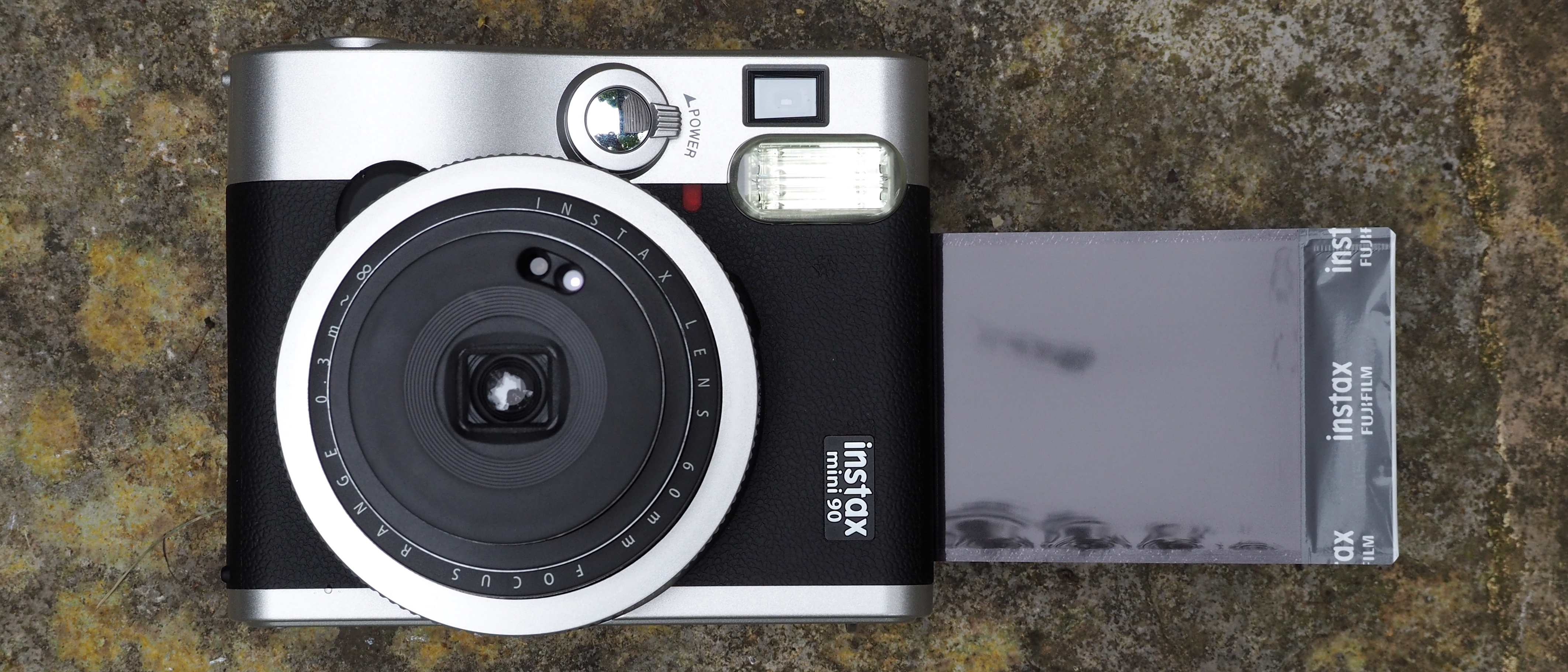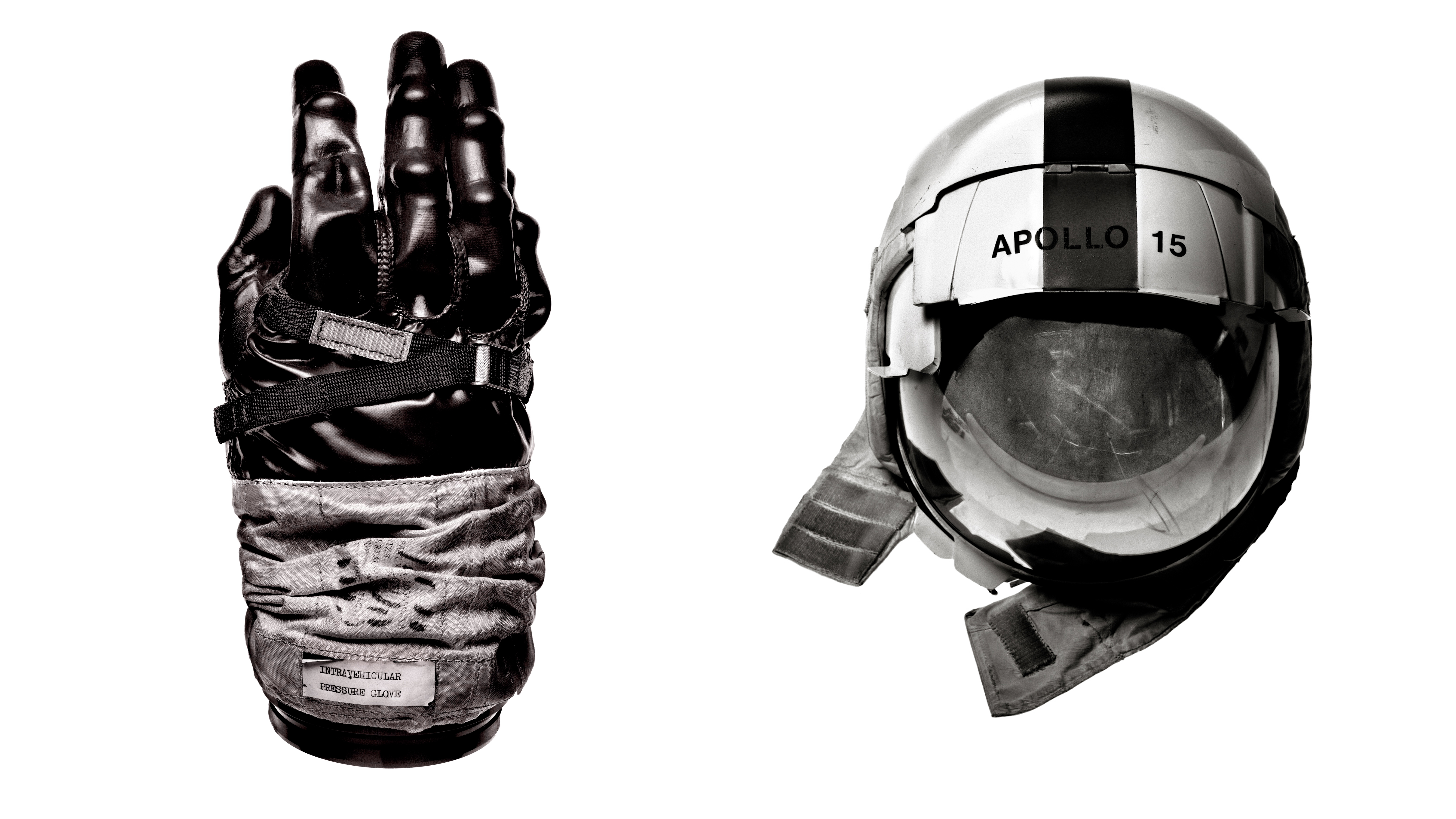Digital Camera World Verdict
‘Classic’ styled instant print camera offers simplicity of use and credit card sized hard copies for those seeking instant gratification with each press of the shutter release. Instant prints like you remember, from a camera that resembles something from the glory days of analogue film, even if we may quickly become frustrated that the device doesn’t offer a great deal more than that. Still, it’s all about the fun of photography, right? And in that respect the Instax Mini 90 delivers.
Pros
- +
As easy to use as pointing and shooting
- +
A selection of user-selectable optimized shooting modes included
- +
Standalone charger supplied
Cons
- -
Plastic-y feel
- -
As this is a camera and mini printer combined, inevitably the device is chunkier than a regular compact camera
- -
Results inevitably hit and miss
Why you can trust Digital Camera World
Launched in 2022, the Instax Mini 90 'Neo Classic' was a breath of fresh air for the line, offering a refreshing retro-inspired design that was classic, chic, and a million miles from the bubblegum colors and the divisive Instax Mini Hello Kitty.
Today there are a number of other options for that throwback design – and the Instax Mini 90 is no longer a current model. It has been replaced by two newer retro models: the Instax Mini 40 (one of the best instant cameras that's fully analog) and the Instax Mini Evo (one of the best digital instant cameras, with a ⅕-in CMOS sensor that prints onto Instax film).
If you can still find one, the Instax Mini 90 is actually a superior camera to the Mini 40 that replaced it. It boasts features like double exposures, self-timer and the ability to turn the flash off. I'd also argue that the design is much cooler than the 40, though the Evo arguably ups the ante on the aesthetic.
Being part of the Mini series, this camera takes the widely available Instax Mini film packs, each offering 10 shots (or 'prints') of roughly credit card size. Though, because the actual image part is set within a white border, the picture itself is smaller still at just 62x46mm.
As a result, close-up portraits and still life work better than landscapes, as the detail of any subject further away than a few feet from the camera is difficult to make out at this size.

Instax Mini 90 Neo Classic: Specifications
Sensor: N/A
Sensitivity range: Up to ISO800
Video: N/A
Lens: 60mm, f/12.7
Monitor: No
Viewfinder: Optical
Battery life: Up to 100 shots (10 film packs)
Dimensions: 113.4x91.9x57.2mm
Weight: 294g (excluding battery, strap and film pack)
Instax Mini 90 Neo Classic: Key features
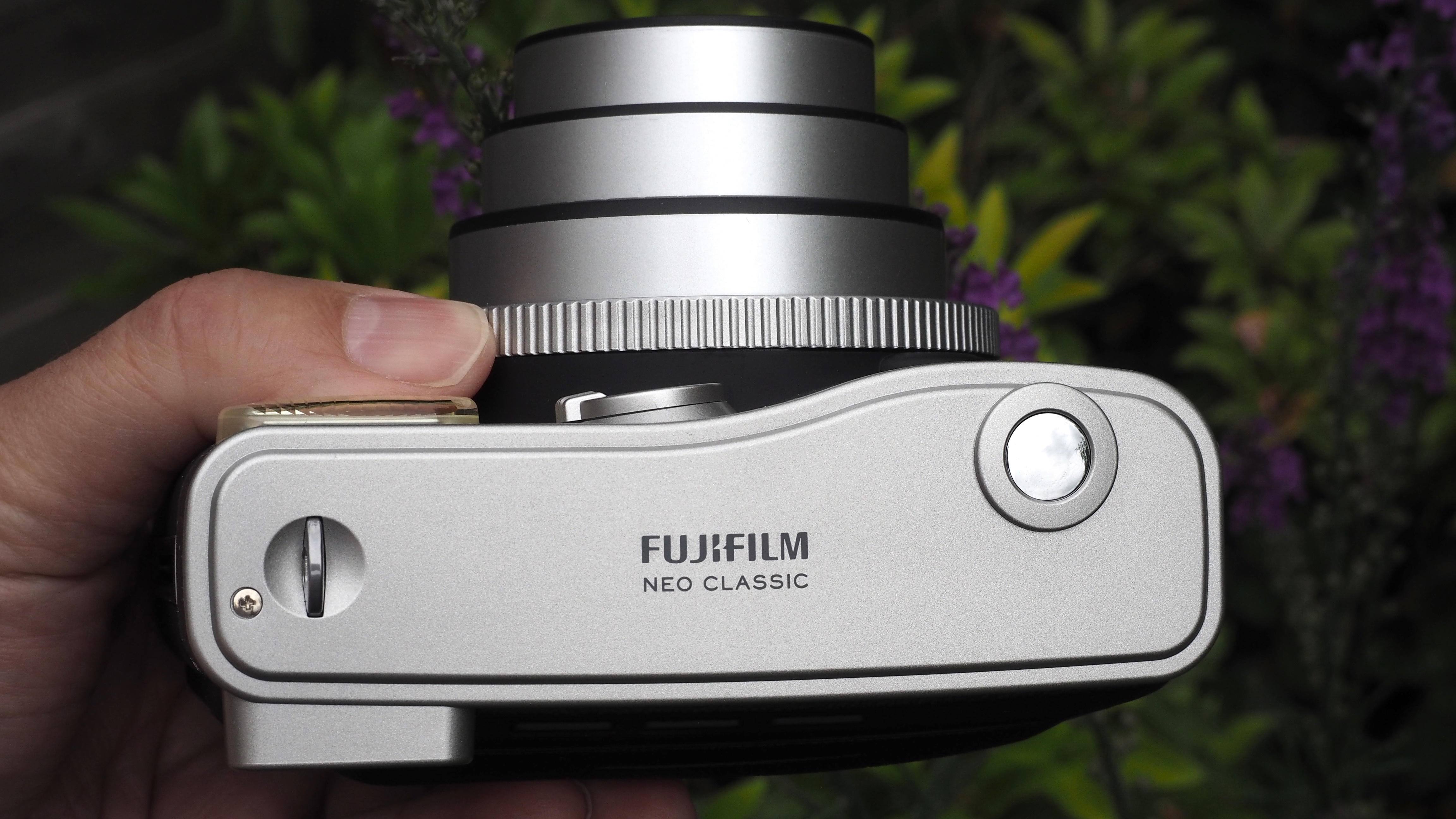
Despite the retro camera styling and black and silver finish lending an air of classic sophistication to what is a plastic construction, there’s nothing particularly trick-sy about this snapshot instant print camera.
For our money we get a focus range stretching from 0.3 metres to infinity and 60mm lens. Yet it does have a few surprises under its bonnet for those who want to do more than point and click. These extra features include double exposure and long exposure options, as found on competing cameras from Lomography, with the basics of snapshot photography accessed via a row of buttons adjacent to the status display window on the backplate. These again are fairly basic but include a dedicated macro mode, party mode, kids mode and landscape mode, plus, usefully, a self-timer too.
Also expected and likewise present and correct here is a built-in flash top right of the faceplate, as viewed from the front. This juts out a little bit proud of the body but it’s still worth paying attention to, in order that a stray finger doesn’t partly obscure it when gripping the camera in both hands. Fortunately there is the ability to disable the flash on this camera if we start to get results that look a little overexposed – which we did on occasion.
Instax Mini 90 Neo Classic: Alternatives
While Polaroid is still going strong, other players have entered the instant print market in Canon and Lomography – although it feels like Canon is dipping a toe in, rather than jumping in full bodies with its own Zoemini S2. The latter is a 188g in weight, slender-bodied pocket-sized instant-camera-and-printer-in-one, which produces credit card-sized prints and stickers.
These work in tandem with a smartphone-friendly Canon Mini Print app, available for smartphone. There’s no such smartphone-compatible features with the Instax Mini 90 Neo Classic, however; look to the Instax Mini Evo if you want a blend of digital and analogue from this brand.
Instax Mini 90 Neo Classic: Build & handling
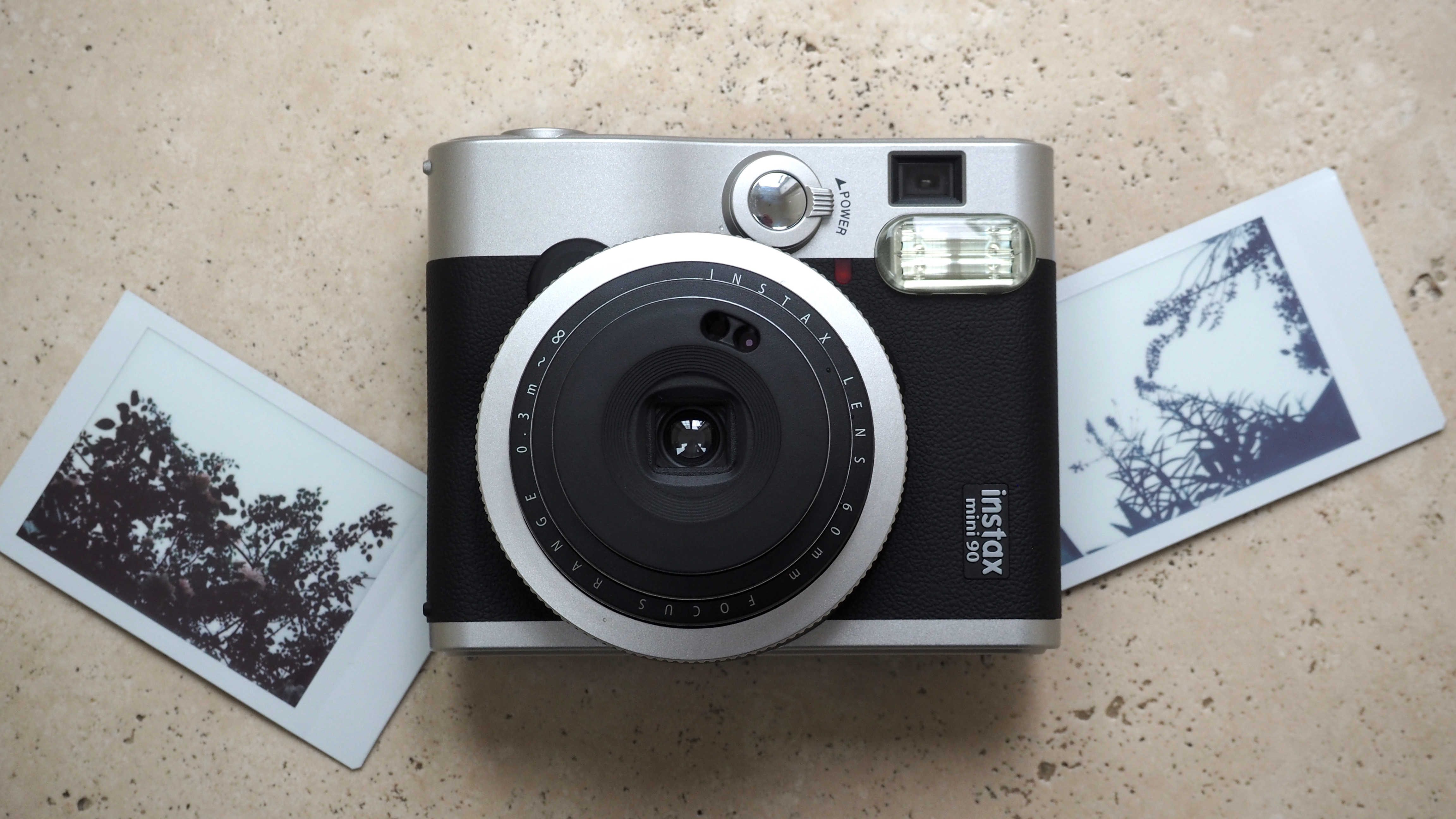
On the Instax Mini 90 Neo Classic the power on/off button is slightly awkwardly placed for our liking, in that it’s encircling a second shutter release button top right of the lens on the camera’s faceplate. We get a further shutter release button located where we’d more conventionally expect to find one – namely top right of the camera’s top plate, where it falls more readily beneath the pad of our forefinger.
Other than this slight ergonomic awkwardness, the device maintains the range’s family friendly appeal; insert the rechargeable battery provided, with, unusually, a standalone mains charger included out of the box, and away we go… pointing and shooting to our heart’s content.
In terms of other less obvious features, we’re provided with a tripod socket here but it’s on the side flank of the camera rather than the base as one might traditionally expect. The suggestion seems to be that the obvious reason for someone to put this camera on a tripod is to take a selfie, with the camera turned on its side in portrait fashion rather than positioned in landscape mode.
Instax Mini 90 Neo Classic: Performance
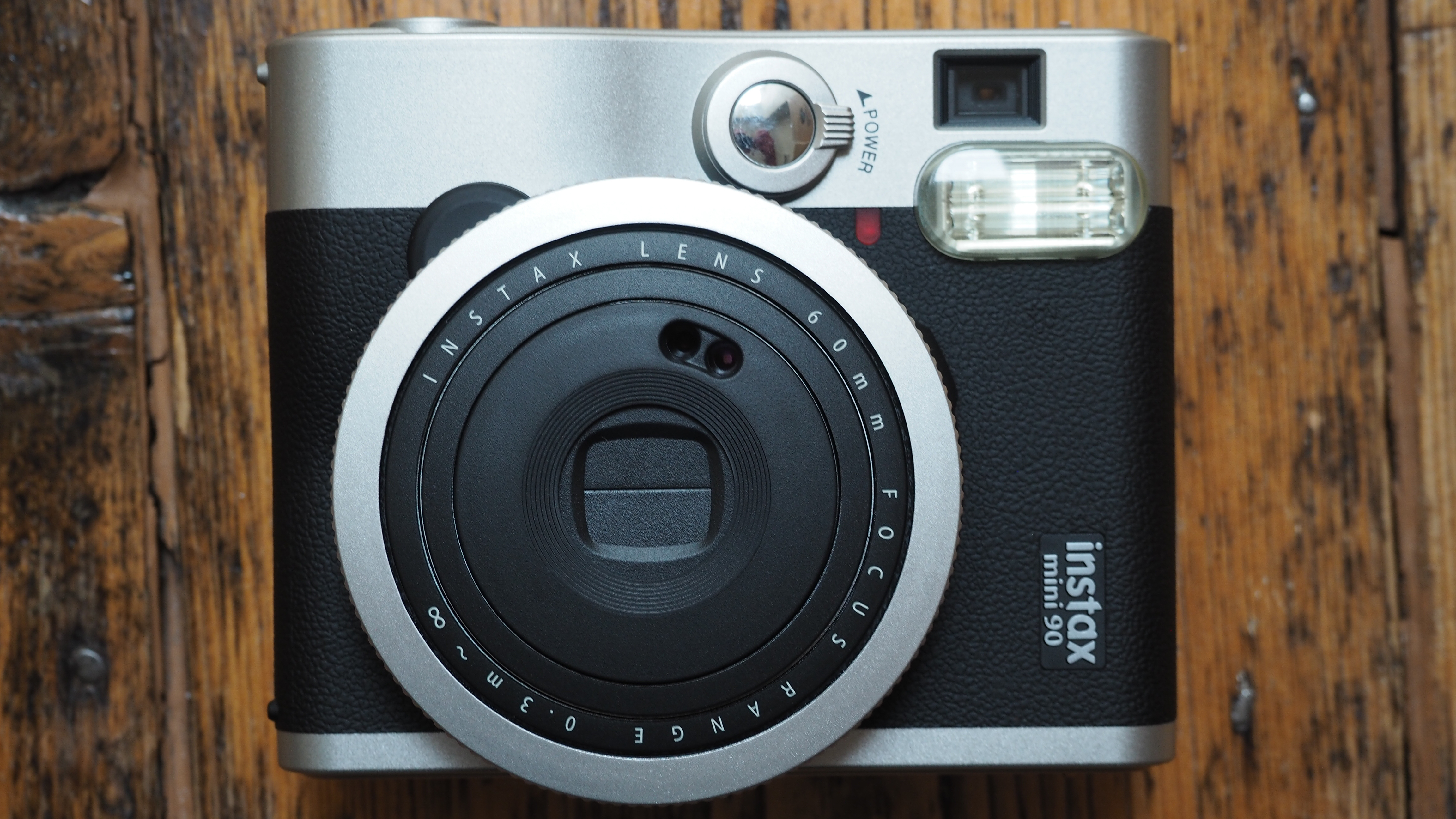
Like with the same brand’s Instax Mini Evo camera, credit card-sized prints are at the heart of what the Instax Mini 90 Neo Classic camera delivers, although due to the frame around the edges and bottom strip the central image portion – or picture window – is even smaller than that.
Like a lot of simple point and shoot cameras, left to its auto everything devices, and particularly pointed at an image with a darker background, this one will tend to fire its flash and overexpose the foreground subject, delivering a washed-out look in which highlights are bleached and colours don’t really pop as well as they might.
If you’re looking for sharply detailed images look elsewhere – we preferred the output from both the Instax Mini Evo and larger Instax Wide 400, although ostensibly they’re using the same film chemistry – but if it’s low-fidelity charm you’re after, then results here will prove satisfactory.
Instax Mini 90 Neo Classic: Verdict
If you’re looking to get started in instant print photography then the Instax Mini 90 Neo Classic edition is a good beginner’s tool, with its ‘proper camera’ retro styling undoubtedly appealing more to adults and older teenagers than little kids than the pastel colors of alternative models and brands.
Inevitably results are as hit and miss as we’d expect from an instant print camera, but as the accent here is as much on fun as image fidelity there won’t be too many furrowed brows when the family gathers around to view the results.
Gavin has over 30 years’ experience of writing about photography and television. He is currently the editor of British Photographic Industry News, and previously served as editor of Which Digital Camera and deputy editor of Total Digital Photography.
He has also written for a wide range of publications including T3, BBC Focus, Empire, NME, Radio Times, MacWorld, Computer Active, What Digital Camera and the Rough Guide books.
With his wealth of knowledge, Gavin is well placed to recognize great camera deals and recommend the best products in Digital Camera World’s buying guides. He also writes on a number of specialist subjects including binoculars and monoculars, spotting scopes, microscopes, trail cameras, action cameras, body cameras, filters and cameras straps.
- James ArtaiusEditor in Chief
